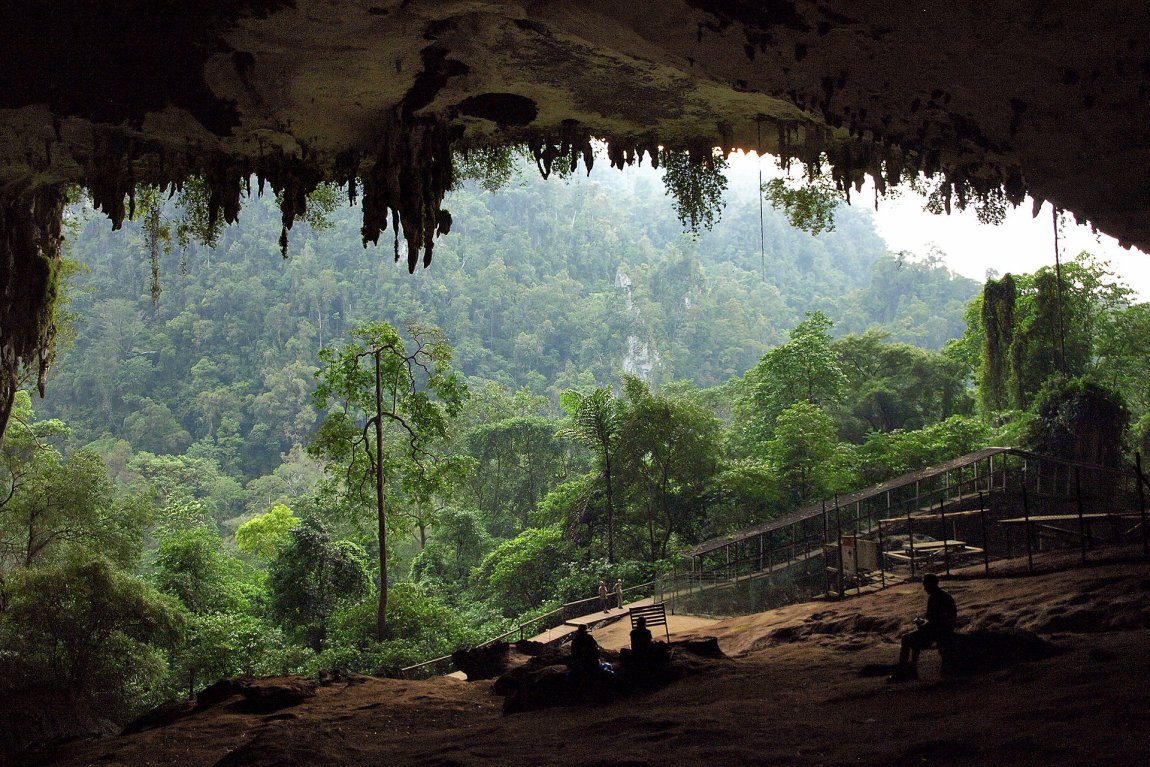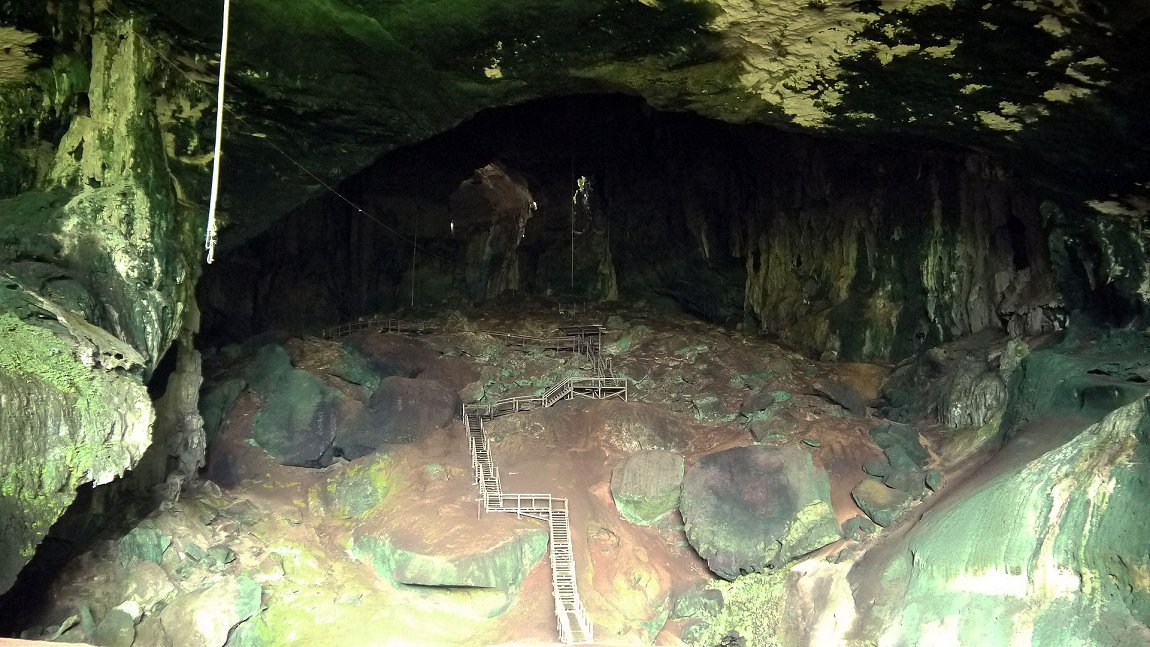 Niah Caves, Sarawak
Niah Caves, Sarawak https://commons.wikimedia.org/wiki/Category:Niah_Caves#/media/File:Niah_Caves_-_The_Great_Cave.jpg
https://commons.wikimedia.org/wiki/Category:Niah_Caves#/media/File:Niah_Caves_-_The_Great_Cave.jpg Starlightchild
Starlightchild
Niah Caves (GPS: 3.79813, 113.78688 approximate) are some of the most famous caves in Sarawak. They are located within Niah National Park, which is about 115 km south of Miri.
The two most famous caves within Niah Caves are Great Cave and Painted Cave. Great Cave is located 3.1 km from the landing across the river, while Painted Cave is another 1.4 km from Great Cave. For details of how to get there, refer to Niah National Park information.
Niah Caves were made famous by the discovery of pre-historic human remains there in 1957 by archaeologists headed by Tom Harrisson, who was the curator of the Sarawak Museum. The archaeological dig was carried out at the mouth of the Great Cave.
 View of the interior of Niah Cave
View of the interior of Niah Cave https://commons.wikimedia.org/wiki/Category:Niah_Caves#/media/File:Gua_Niah_-_Interior_of_Great_Cave.jpg
https://commons.wikimedia.org/wiki/Category:Niah_Caves#/media/File:Gua_Niah_-_Interior_of_Great_Cave.jpg Azreey
Azreey
From the park headquarters, take a boat across Sungai Niah. On the other side of the river, there is a raised wooden walkway - which can be very slippery and noisy - that takes you to the caves. As you walk, you will hear the surrounding jungle noises from the birds and the monkeys. The route skirts jagged limestone outcrops. Just before the cave entrance, the broadwalk folks. Take the right turn to go to the caves. The left one goes to Rumah Chang homestay longhouse. Some times you can find locals selling drinks at this junction. The trail continues under a large overhang called Trader's Cave. It bear traces of how the early bird's nest collectors work. The trail then turn a corner, and enters Great Cave.
Great Cave measures 250 meters across at the mouth, and reaches a height of 60 meters. You will only realise its size as you venture deeper. The cave used to harbour half a million bats and four million swiftlets, but today they are much fewer than before. Several types of swiftlets can be found in the cave, the most common being the glossy swiftlet whose nest cannot be eaten. It is the species whose nests are harvested that are the least abundant, and are making their home in the deepest cravices of the cave.
During dusk, there is a sort of animal change of shift. That's when the swiftlets retire to their cave apartments while the bats spew out to their night duty. To witness this coming ins and outs, be sure to arrange with the boatmen for a late transfer back, or else you will be stranded in the cave over night.
Inside the cave, although the broadwalk continues, you will need a powerful torch to see your way around. (Torches can be rented for RM5.00) The stairs and hand rails are well peppered with bat droppings, called guano, and the wooden plank walkway can be mighty slippery. Here and there, where the ceiling of the cave is punctuated by vents, sunlight streams down in beams.
When you are done exploring Great Cave, continue along the path beyond the opening and make your way to Painted Cave. Mind you, it is easy to overlook the entrance. A travel binoculars would come in handy to view the now indistinct prehistoric paintings on the cave wall.
Niah Caves is  on the map of Caves in Malaysia
on the map of Caves in Malaysia
List of Caves in Sarawak and Caves in Malaysia
 Latest updates on Penang Travel Tips
Latest updates on Penang Travel Tips
 Map of Roads in Penang
Map of Roads in Penang
Looking for information on Penang? Use this Map of Roads in Penang to zoom in on information about Penang, brought to you road by road.Disclaimer
Please use the information on this page as guidance only. The author endeavours to update the information on this page from time to time, but regrets any inaccuracies if there be any.
Copyright © 2003-2025 Timothy Tye. All Rights Reserved.

 Go Back
Go Back